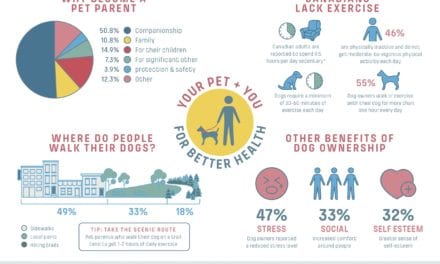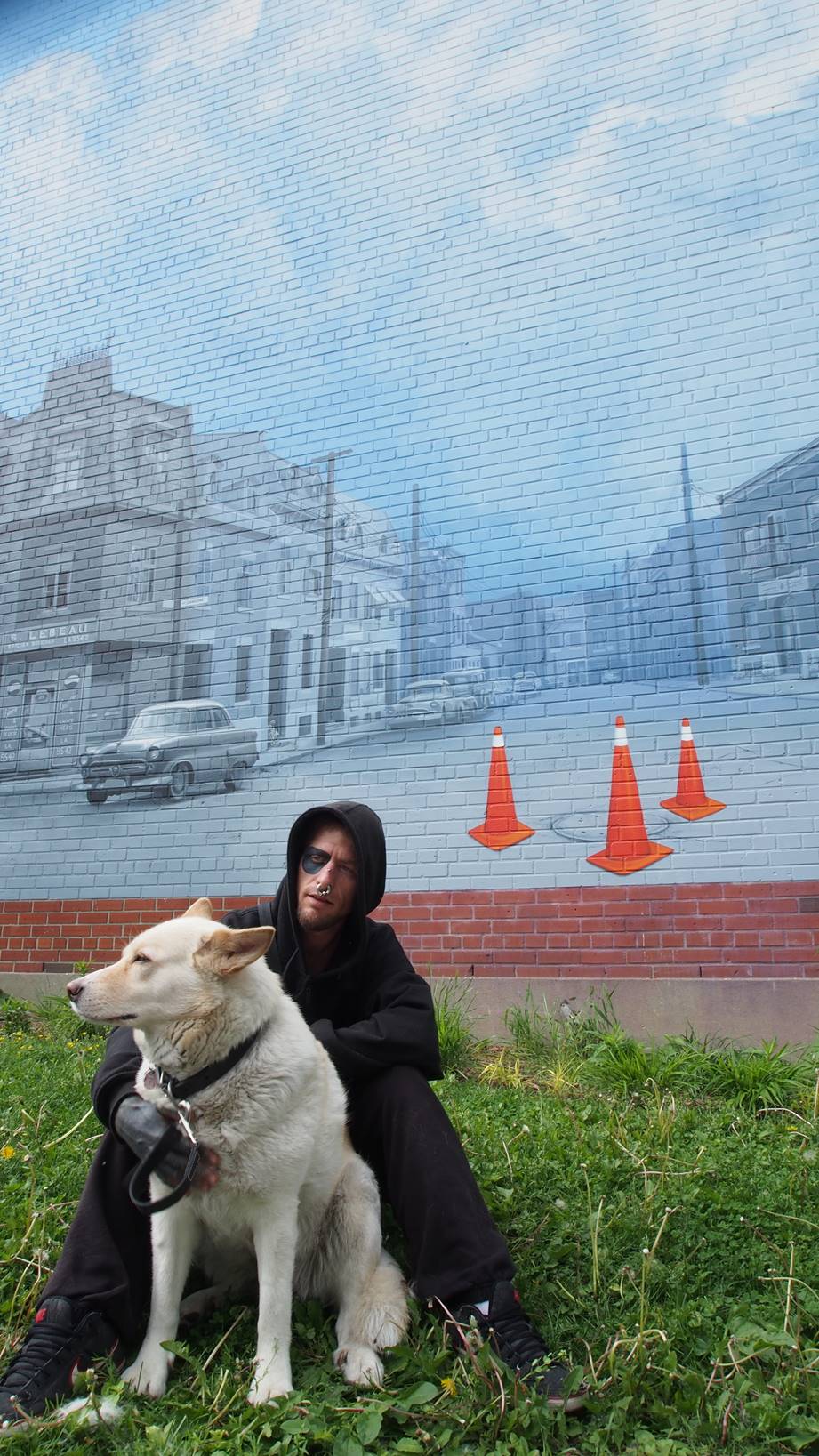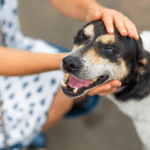By Bianca Kapteyn
In August, 2005, Hurricane Katrina catastrophically interrupted the dog days of summer on the southern shores of the United States, infamously touching land in southeast Louisiana. The natural disaster – combined with institutional failure, a lack of preparedness and a failed levee system –created a “perfect storm” that shattered a city and left widespread misery in its wake.
As a million or so people were evacuated or displaced, untold numbers of pets were left behind, many to starve. Television viewers watched news clips of stranded animals on roof-tops and read reports of pets locked in their homes to die.
The gut-wrenching visuals and emotional pleas for help in the aftermath galvanized hundreds of people from across North America to stream to New Orleans to volunteer their services in a race against time. The goal: the largest-scale pet rescue in living memory.
Tom McPhee was a witness to the aftermath of Katrina’s devastation – first as a humanitarian volunteer helping pull bodies out of homes. Then came the second wave of horrific realization. McPhee photographed stranded and lost animals and posted their pictures on the Web in the hopes of reuniting pets and their owners.
McPhee went on to shoot video for the Washington, D.C.-based International Fund for Animal Welfare, Animal Planet and for a PBS nature series. And that barely dented the voluminous stock of images he’d amassed of Katrina’s “other” victims. He used his remaining footage to produce his own documentary, the award-winning documentary “An American Opera: the greatest pet rescue ever! ”
I had the pleasure of interviewing the acclaimed director and producer in Toronto. McPhee talked frankly about his film and his life-altering experience in New Orleans. Here’s what he had to say:
CC: Tell us about your film
Tom McPhee: I am the producer and director of An American Opera, The Greatest Pet Rescue Ever! My multi-award-winning documentary is about what happened to the animals following hurricane Katrina.
CC: How does it resonate today?
TM: Although ‘An American Opera’ was shot beginning in 2005 when hurricane Katrina devastated New Orleans, the particulars about what took place then are actually still going on. If you follow what took place with the animals–when they were forcibly separated from their owners when they were evacuated–if you the followed the stories, then you know that there were tens of thousands of animals that were separated. Only a fraction of those animals were reunited with their owners. And all kinds of different consequences still continue on to this day, three and a half years later. That’s just with that one event.
But how specifically does ‘An American Opera’ resonate today?
TM: Specifically, as it relates to the United States, is that the economic crisis that’s taken place is creating a situation where people are making choices where they’re separating themselves from their animals. If they lost their house for instance, they may walk away from their house, their contents, and may leave their animal. Or in a lot of other instances where people are trying to be somewhat responsible, they lose their house and give up their animal to a shelter or to a community organization. That’s putting a huge strain on the system in the United States as it relates to the pet population and pet management overall. And although this is something taking place over a period of time, hurricane Katrina was a specific event, an historical moment that took place in a blink of an eye, that had these repercussions. But the situation in the United States with the economic crisis is a long drawn-out train wreck that’s happening in slow motion. And, a lot of people don’t understand how pets are being tremendously affected by this. So, that to me is one way this resonates. I made An American Opera specifically to not be a perishable film. If you understand film and cinema, there are movies that are made to stick and stay in a specific period of time, that’s what it is.
This being an historical picture has a lot of those elements. But the way I constructed the film was to play outside of time. It’s not about animals, it’s not about hurricanes, it’s not about a city. It’s basically really how we deal with things when we’re confronted with a crisis. My focus was the pet-centric aspect of this crisis.
CC: With hindsight on Katrina – the worst domestic animal (pets) crisis in North America history – what are your thoughts on how to manage large-scale animal rescue?
TM: That’s a really good question. That’s the first time that’s been asked of me. And, I do have an opinion about it. Although I don’t come from the animal world, I am not a pet person. I am an entrepreneur and filmmaker who happened to be in a place in time to make this film. By the way when I started making an America Opera: The Greatest Pet Rescue Ever!, I had no concept of the pet aspect, I went down to specifically help out people, being an entrepreneur and somebody who’s generally ready. And I had cameras with me too.
Here’s what I’ve noticed or recognized. This a major problem as it deals with animal rescue. This was a huge example!
The state decided to take a very controlling aspect, the state of Louisiana where my story takes place. One of their decisions was to create pretty much a closed-loop system. Although a lot of volunteers were coming down to help, unless they were known commodities ahead of time, they were not necessary recognized or sanctioned by the state, and therefore were considered rogue rescuers.
There were lots of people that came down to help, that had a lot of skill sets, years of experience collectively doing this type of work, that were kind of shunned, because they were not part of the ad hoc system that was put together.
That ad hoc system didn’t really allow for any kind of scaling up to deal with more people and didn’t allow for being able to educate on the fly. More importantly, at least in Louisiana, there was also no single point of daily responsibility. Through the first couple of weeks it was rotational. Every day was a new officer of the day if you will. And so that created problems because each day that somebody was taking over command, they would have different requirements, responsibilities, they would have different priories that wouldn’t necessarily be the same as the person before. So that kind had things out of whack.
The situation with animal rescue in a large-scale situation is you’ve got to have a single point of definition, of control, and from that you should be able to scale down. When you have, like you did in hurricane Katrina, several thousands of people come down, one of the first things you should set up is the ability to receive these people and then properly educate them and certify them on the fly. So then you can put them into play and utilize their services.
I believe if you take a look at the evidence, it’ll pretty much show there was no expectation to take care of the pets. The pets were expendable in this situation in Louisiana, following hurricane Katrina – an expendable commodity. They came under the State Vets control, and the States Vets’ real responsibilities are dealing with livestock, disease issues, and the commerce of livestock. And so
there was no connection, understanding or commitment to the pets and people. There should’ve not have been any forced evacuation that separated the tens of thousands of animals in the first place. But once that did happen, you were constricted from being able to properly deal with it get your hands around it, because of this closed-loop system, that was non scaleable, that didn’t educate and created an us-and-them type of environment.
So that was one of the biggest things. There needs to be a single point of command that allows everybody to participate and move in the same direction.
CC: Tell us about the Rescue Party Tour and its Canadian date.
TM: The Rescue Party Tour is a 100-plus city tour that is featuring An America Opera: The Greatest Pet Rescue Ever! We do a VIP meet-and-greet, we reach out to local animal organizations in each of the communities that we go to, to create a unique pet-centric event.
Wherever we show An America Opera we’ll offer tabling and create an environment for rescue groups to communicate their issues, their needs in the community.
More importantly, one the things starting to develop out of this is the new youth documentary film movement. In a lot of the towns we go in, we’re promoting the idea of youths shooting two-three-to-five minute films about pet-related issues in their community. And then we incorporate into An America Opera screening. The purpose of the Rescue Party Tour is to bring to light the relationship between humans and animals, the bond that exists there.
The Rescue Party celebrates the humanity of that bond.
CC: What’s next on the horizon?
TM: Turning the Rescue Party Tour into a year-long continuing Pet-centric film festival. Although we will be playing July 23rd at the Bloor, from 6-9pm., we’re going to be playing at a 100 other communities as well. And when we’re done with this, we want to continue to utilize that circuit – to screen more animal films in those facilities that screened An America Opera. We would like to build a continual animal-related film festival that travels those 100 cities. For more information, visit An America Opera website:
That’s what’s next.









